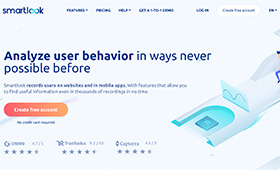How Poor Internet Security Can Ruin Your User Experience
For much of the history of computers, the focus has lain with the functionality of computers. It was about getting the job done. Very little consideration was given to how users feel while getting the job done. This makes a lot of sense when we consider that computers were always intended to be tools.
A good analogy would be learning how to bake a cake before worrying about how to decorate it.
User experience has been critical to the new wave of internet companies. So often, those that have fewer features, but make their users feel more enjoyment and engagement while using their products, win out in the marketplace.
There’s an endless number of flame wars burning on the internet right now, and they’re fights between more features and better features. But an area that is particularly troublesome for UX designers is security. How do you ensure your product or website is secure without annoying your users?
A Tradeoff between Internet Security and UX
Many people (including some UX designers) see a tradeoff between internet security and UX: more security leads to poorer UX. This is true to some degree. Your users don’t want to be bogged down by cumbersome security features that make it too difficult, irritating or time-consuming to use your product. Too much security ruins your user experience, and users might look for loopholes in the system to avoid security features. Worse yet, cumbersome security features might lead your users to stop using your website or product entirely.
For example, forcing users to remember a password for a website or product they only use occasionally can leave them frustrated. This only worsens their overall experience of the brand. Lately, with websites trying to encourage better user security habits by requiring strong passwords, the problem has become even worse. Creating a strong password is one thing, but remembering it is another animal entirely. Some UX designers have recognized this and flat-out call passwords “bad user experience.”
A False Dichotomy
However, this tradeoff may well be a false dichotomy. Too much cybersecurity can definitely ruin your user experience, but so can too little. There are two main ways in which too little internet security can ruin your user experience. While the first way is unfortunate, the second can be a complete disaster for your users. It can also be a complete disaster for your business.
The first is by leaving your users feeling vulnerable to cyberattacks or security breaches. Many internet users, particularly those from younger generations, are aware of the dangers associated with a lack of online security.
This means that they look out for security features, especially if they’re looking to purchase something on a website. If they don’t see an appropriate level of security, they’re likely to be uncomfortable using your product. So, a lack of visible security can actually ruin your user experience.
There is another, far worse, way in which a lack of security can ruin your user experience.
While some UX designers still believe that “high internet security equals bad experience,” often “low security equals an even worse experience.” Anyone who has experienced a virus, a hack, ransomware or worse, understands this all too well.
Your users will have a very unpleasant experience indeed if your product exposes them to malware or if your system is breached and their personal data is exposed. This is how poor internet security can truly ruin your user experience.
Creating Balance
Given how too little security can ruin your user experience, the question becomes one of balance instead of a tradeoff. How can you achieve the perfect balance between security and user experience? In an ideal world, cybersecurity would be integrated into your product completely seamlessly. It would not bother your users in the slightest. However, they would be able to find evidence of your security feature were they to look for it.
One way to work toward this balance is by adding more “invisible” security features in your website or product. You’ll still need to use passwords and such, but these invisible features will add another layer of security to your product or website without ruining your user experience.
These measures are not burdensome, so they won’t annoy your users. They include ensuring that your system is secure and free of malware, network security such as data encryption and a Virtual Private Network (VPN), as well as ensuring that all customer data you collect is stored in the safest way possible.
Another way to find this balance is “security by design.” This is the idea that security should be built into a website or product much earlier in the development process, instead of being added at the end. Security by design requires everyone involved to agree that security is a vital aspect of the product before even starting the project. Then invisible security measures should be embedded into all phases of the project: planning, design and implementation.
Keeping a focus on security throughout the process ensures that security is embedded, which results in much better UX. And this is where UX designers come in. Security experts rarely have design knowledge, which makes it essential for them to work alongside UX designers to achieve the perfect balance between UX and security.
Ideally, UX designers and security experts should work together from the beginning of the project for the best results.
Conclusion
There are many pitfalls and dangers on the internet, with new threats popping up every day. Though some of the experience of security might seem to be an irritation to your users, most of the time those irritations are small (if the UX design is good) in comparison to the awful user experiences that will result if something goes wrong and your users’ personal security is violated.
Do you agree that poor internet security can ruin your user experience? Have you managed to find a good balance between security and UX? If so, how did you do it?







I just had an awful experience with security. I am the recipient of a survivor’s benefits from the VA. Needed to change the direct deposit information. Since I have had no reason to log on for several years my password was expired. I gave up on the security nightmare that is the VA process and called and had them change it. Hopefully I will die before I ever have to change anything again. Yes, it is that bad!